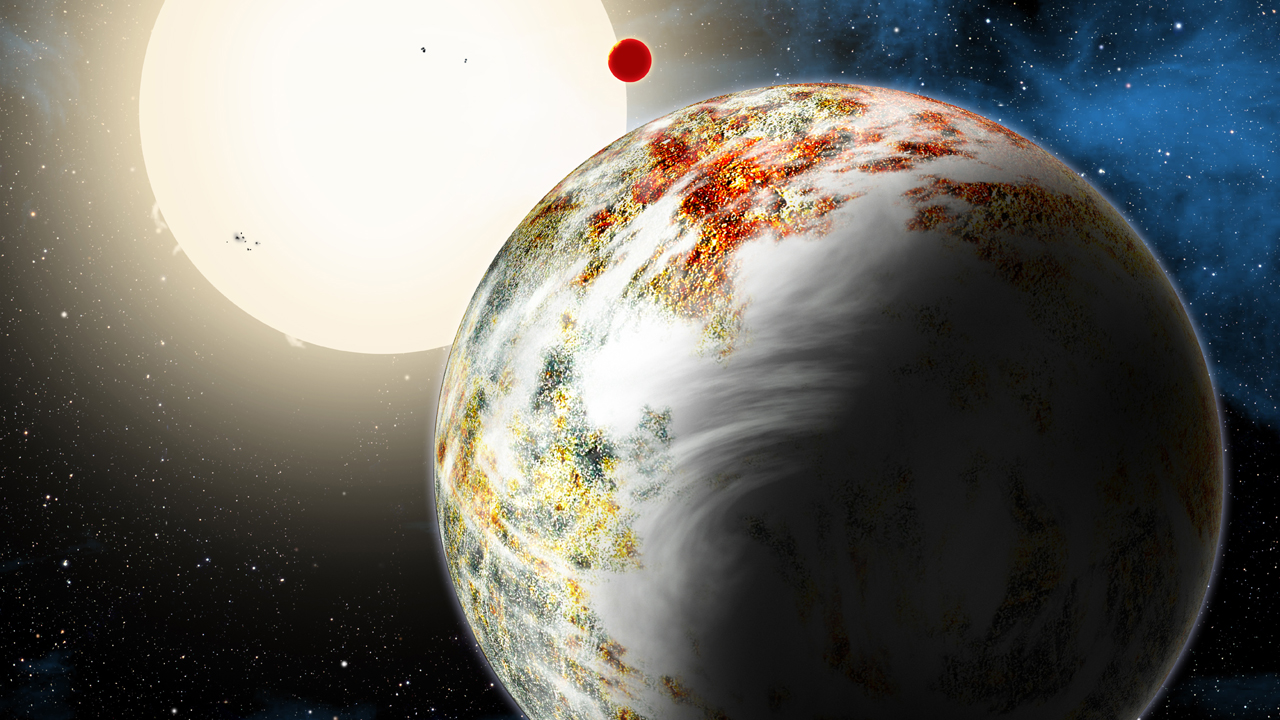Harvard-Smithsonian Center for Astrophysics (CfA) announced yesterday that they’ve discovered a “new” rocky planet 650 light-years away, spotted by NASA’s Kepler spacecraft. It is about 11 billion years old, circles a sunlike star once every 45 days and is all solid, “although it may possess a thin atmosphere shown here as wispy clouds” in the artist rendering above. It is revolutionary to our Harvard scientists’ understanding of the universe, suggesting that rocky planets form faster than we Harvard scientists have originally thought.
Its official name is Kepler-10c, but since it weighs 17 times as much as our Earth, bigger than previously discovered “super-Earths” so it is being dubbed…

“This is the Godzilla of Earths!” says CfA researcher and director of the Harvard Origins of Life Initiative, Dimitar Sasselov, trying very hard to make this thing as topical as possible. “But unlike the movie monster, Kepler-10c has positive implications for life.” Mega. (Image: David A. Aguilar/Harvard)



